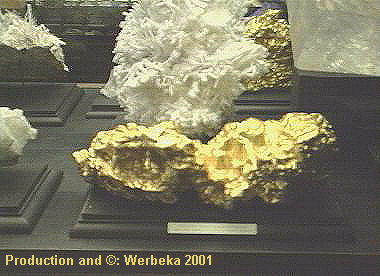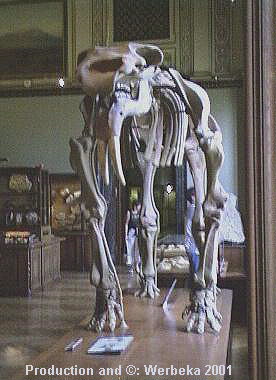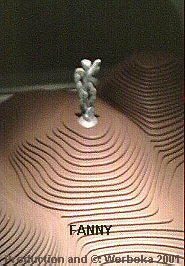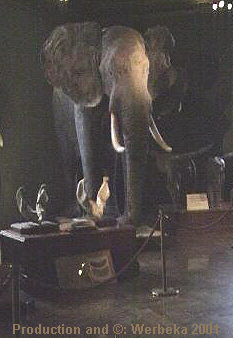
The Museum of Natural History in Vienna
The founder of the collections in the Museum of Natural History was Francis Stephen of Lorraine, the husband of Maria Theresia, who bought the world's most famous collection at that time from Johann Ritter von Baillou and then continued to add specimen from all over the world.
 |
Today the collection consists several millions of objects. It is of course impossible to give an impression of the tremendous treasures to be seen there, if you are limited to a few pages. Therefore I shall describe the contents in an overall manner and concentrate on a few special objects, which I found most interesting.
The first five rooms contain about everything a mineralogist can dream of. In the first one there are large mineral specimens to be seen - I remember a piece of rock salt bigger than myself, or a smoky quartz crystal with the moderate weight of 115 kilograms. It really is awesome to look at these wonders that nature has created.
|
 |
The first four rooms also contain a systematic collection of minerals, divided into different classes. They are all very impressive, but I found the fourth room to be the most interesting part, where the precious stones and metals are shown, which are used to make jewelry. In this room there is also one of the most wonderful objects of the museum, the floral bouquet of gems, given by Maria Theresia to her husband. It is built of 2102 diamonds and 761 coloured gems. Its leaves are silk and the vase is rock crystal. It is kept behind a glass-panel in the wall, so don't miss it, when you are there.
In the next room you find the world's largest permanent exhibition of meteorites, with almost 1500 pieces. Another interesting object is the mechanical planetarium, constructed in the 18th century by Johann Georg Neßtfell.
The next part of the museum is detached to palaentology as well as mankind's prehistory and early history. A marvellous experience is to behold the mighty skeleton of a 25 m long Diplodocus, a dinosaur. Take a break for a moment and try to imagine that size. It is as big as a normal swimming bath used in championships! It really is a sight! The skeleton was a gift from Andrew Carnegie to Emperor Francis Joseph. There are other impressive skeletons to be seen as well as fossils from flora and fauna. |
 |
In the next room there are two artifacts from the early days of mankind's cultural expression. The "Venus von Willendorf", an 11 cm limestone-statue is more than 20000 years old. This little lady makes your mind travelling back through the millennia, wondering about her origin and use.... The recent finding of the statue on the Galgenberg moves art still further back in man's history. Called Fanny, she is said to be 32000 years old. Standing there with a raised arm, it is the oldest image of a human shape, that we know of today. There are of course findings which date back much longer, such as hand axes and other simple stone tools, which also can be seen there. But even if the oldest are about 700000 years old, they are not very specific for the Viennese museum. |
 |
 |
The following rooms lead us through the bronze and iron ages, one of the rooms is of course dedicated especially to the Hallstatt culture in Austria, during the former part of the first millennium B.C. You find tools, weapons, jewelry and pottery of all kinds. And even if my own interest in the 6th century B.C. (in German only) is aroused, I can feel that I am getting tired of the numerous impressions all around. As in most huge museums one day's visit is far from enough, if you want to get the most out of it. I hardly remember the two final rooms on the first floor, showing the evolution of man.
After a coffee-break and an inspection of the shop on the second floor, it is an obligation to at least walk through the large zoological part of the museum, covering the entire second floor. Here too, you can follow a systematic presentation, starting with sponges and mollusks, through insects (take a look at the butterflies!), fishes, amphibians, reptiles, birds and finally mammals. There are specimen of almost all animals living in Austria and very many from all over the world, showing even an Tasmanian wolf, which has been extinct a couple of hundred years. If you are interested in zoology, you can definitely spend a whole day here, without being able to study all of the exhibited animals. |
Back to  or to the or to the  of of 
11.8.2001 by webmaster@werbeka.com
|







